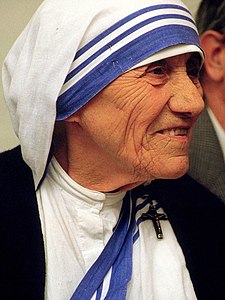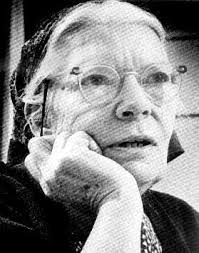Everyone thinks Halloween is the Irish Feis Samhain, which began at sunset on 31 Oct and that the Church co-opted the date. However, the feast "in honor of all the saints in heaven" was originally 13 May, and Pope Gregory III (d. 741) moved it to 1 Nov to mark the dedication day of All Saints Chapel in St. Peter’s at Rome. There was no connection to distant Irish customs, and the parishioners of St. Peter would not likely have been beguiled by it. Not until the 840s, did Pope Gregory IV declare All Saints to be a universal feast, not restricted to St. Peter's. The holy day spread to Ireland.
The day before a feast is the "vigil mass" and so after sunset on 31 Oct became "All Hallows Even" or "Hallowe’en." It had no more significance than the "Vigil of St. Lawrence" or the "Vigil of John the Baptist" or any of the other vigils on the calendar.
In 998, St. Odilo, the abbot of the powerful monastery of Cluny in Southern France, added a celebration on Nov. 2. This was a day of prayer for "the souls of all the faithful departed." This feast, called All Souls Day, spread from France to the rest of Europe.
That took care of Heaven and Purgatory. The Irish, being the Irish, thought it unfair to leave the souls in Hell out. So on Hallowe'en they would bang pots and pans to let the souls in Hell know they were not forgotten. However, the Feast of All Damned never caught on, for fairly obvious theological reasons. The Irish, however, had another day for partying.
After the Black Death, All Souls Day became more important, and a popular motif was the Danse Macabre (Dance of Death). It usually showed the devil "leading a daisy chain of people — popes, kings, ladies, knights, monks, peasants, lepers, etc. — into the tomb." Sometimes the dance was presented on All Souls’ Day itself as a living tableau with people dressed up in the garb of various walks of life.
"But the French dressed up on All Souls, not Hallowe'en; and the Irish, who had Hallowe'en, did not dress up." During the 1700s the Irish and French Catholics began to bump into one another in British North America and the two traditions mingled. "The Irish focus on hell gave the French masquerades and even more macabre twist."
(h/t: John Farrell)
So in honor of All Saints Day, I offer a list of saints and beati and a reminder of what "catholic" means. The list is somewhat notional and idiosyncratic.
A Potpourri of Saints:
A:
Jesus said, “Go, therefore, and make disciples of all nations, teaching them
all that I have commanded you.”
℟: And there
before me was a great multitude which no one could count, from every nation,
race, people, and tongue, standing before the throne and before the Lamb.
The Jews: Joseph of Palestine; Pope Zozimus; Romanus the Melodist; Daniel of Padua; Julian of Toledo
 |
| Sharbel Maklouf |
The Lebanon: Rafka al Rayes; Sharbel Maklouf
Greece: Irene; Pope Sixtus II; Macrina; Alexander Akimetes
Rome: Agnes; Cecilia; Pope Cornelius
 |
| Everyone's Little Sister |
The Palestinian Arabs: Moses the Arab; Cosmas and Damian; Mary Baouardy, the Little Sister to Everyone
Iraq: Maruthas of Maiferkat; Ephraem ("the Harp of the Holy Ghost")
Persia: Anastasius Majundat; Abdon and Sennen; Shapur of Bet-Nicator
 |
| Moses the Black |
The Yemen: Sheikh Aretas of the Banu Harith and the Martyrs of Najran
Armenia: Isaac the Great; Gomidas Keumerigian
Georgia: Nino Christiana (Apostle-Mother of Georgia); Euthymius the Enlightener; George Mtasmindeli
Italy: Thomas Aquinas ("the Dumb Ox”); Maria Goretti; John Bosco; Pope John XXIII
Spain: Nathalia and Aurelius; Theresa of Avila; Dominic de Guzmán
The Basques: Ignatius Loyola
 |
| The Little Flower |
Portugal: Anthony of Padua; Isabella
France: Margaret Mary Alacoque of the Sacred Heart; John Baptist de la Salle; Theresa of Lisieux ("the Little Flower")
The Bretons: Alan de Solminihac
The Belgians: Mary of Oignies
Ireland: Brigit; Conleth of Kildare; Colmcille of Iona; etc.
Scotland: David, King of Scots; Margaret of Scotland; John Ogilvie
England: Augustine of Canterbury; Edith of Wilton; Thomas More; Margaret Ward.
Wales: Dafydd of Wales; Cadoc of Llancarfan
 |
| The Sybil of the Rhine |
Austria and Switzerland: Nicholas von Flue; Jakob Gapp
Scandinavia: Gorman of Schleswig; Hallvard of Oslo; Bridget of Sweden; Thorlac of Iceland
The Baltics: George Matulaitis of Lithuania
Hungary: King Istvan the Great; Elizabeth of Hungary
The Czechs: Good King Wenceslaus; Agnes of Bohemia; John Nepomucene Neumann
Poland: Hyacinth Ronzki; Stanislaus Szczepanowski; Mother Mary Theresa Ledochowska; Pope John Paul the Great
 |
| Mom |
The Balkans: Sava of Serbia; Mark Korosy of Croatia; Ieremia Stoica of Romania; Bishop Eugene Bossilkov of Bulgaria
All the Russias: Sergius of Radonezh; Euphrosyne of Polotsk; Vladimir of Kiev; Josaphata Hordashevska
 |
| The Lily of the Mohawks |
Puerto Rico: Carlos Manuel Rodríguez Santiago
Mexico: Bartholomew Laurel; Miguel Pio;
María Guadalupe García Zavala, (“Mother Lupita”)
Guatemala: Peter Betancurt
El Salvador: Bishop Oscar Romero
Peru: Rose of Lima; Ana de los Angeles Monteagudo
Ecuador: Mercedes of Jesus; Mariana de Paredes, the Lily of Quito
 |
| Dorothy Day |
Brazil: Antonio de Santa Ana Galvao; Paulina
Paraguay: Roque Gonzalez de Santa Cruz
Chile: Teresa of the Andes;
United States: Katherine Drexel; Mother Frances Cabrini; Dorothy Day
Canada: Marguerite D’Youville; Mary Rose Durocher
 |
| Mother Mankidyan |
The Philippines: Lorenzo Ruiz
China: Thaddeus Lieu; Agnes Sao Kuy
 |
| Magdelene of Nagasaki |
Korea: Agatha Kim; Paul Chong Hasang
Thailand: Philip Siphong; Lucy Khambong
Viet Nam: Agnes De; Father John Dat
 |
| Mother Bakhita |
African Diaspora: Benedict the Moor; Martin de Pores
Uganda: Charles Lwanga
The Sudan: Mother Josephine Bakhita
The Congo: Anuarite Nengapeta
Madagascar: Victoria Rasoamanarivo
+ + +
Down through the centuries, the Catholic Church has learned much from successive secular orders. From the East it learned a sense of the great mystery and transcendence of God—a more mystical and contemplative cast of mind. From the ancient Greeks it learned to love reason, proportion, and beauty. From the Romans it learned stoic virtue, universal administration, and a practical sense of law. From the French it learned the upward flare of the Gothic and the brilliance of idées claires and rapid wordplay. From the Germans, metaphysics, formidable historical learning, and metahistorical thinking. And from the Anglo-Americans, a dose of common sense and a passion for the religious liberty of the individual conscience.
-- Michael Novak, "Remembering the Secular Age"


I'm not certain the French didn't dress up on the eve of All Saints, since they dressed up on the eve of Ash Wednesday (in Cajun country they even trick-or-treat, for gumbo ingredients, albeit on horseback). The English, at least, and I think the French too (England being Canada to France's US for all of the medieval period), also dressed up and went around singing for goodies (traditionally hot spiced wine) on the eve of Christmas.
ReplyDeleteActually, Gregory III moved the feast to November 1 reasoning that any stupid traditions that grew up around the feast would at least be kept indoors.
ReplyDeleteNo... Actually it was all part of the assassinate the Popes, Emperor refusing to read his letters, nuns knocking soldiers off ladders to their deaths, soldiers' buddies killing nuns with trumpets in revenge, struggle between the iconoclasts and the iconodules.
DeleteI've got a lot of the details on my blog, but the gist is that Pope Gregory III ended up having to hold a synod in November on the topic of "being an iconoclast is bad, and honoring saints is good." He made his point stronger by opening up the synod with the dedication of a new "oratory" (in this case, like a chapel but in the middle-front of St. Peter's nave) with two altars, an entombed martyr from Sicily under an altar, a tonload of saints' relics and icons from all around Rome, and a big icon of Mary. And an inscription. Changing the saints' day to the day of the oratory dedication was just for the city and diocese of Rome at that point.
So yeah, we have All Saints' Day in November for practical logistics and political reasons.
The really amusing thing is that a lot of the woo-woo Halloween stuff seems to happen when the English government prohibits keeping the All Hallows vigil with all-night prayer and bellringing, or with processions by torchlight. A lot of Catholics (like in Lancashire) would sneak out and have their vigil out in a field somewhere.
ReplyDeleteSo all of a sudden, there are people wandering around the countryside at midnight, lighting mysterious fires in the middle of nowhere, chanting in chorus under their breaths.
And then other people claim that they are going out "looking for witches."
See, originally Halloween was a fasting and pray-all-night night. So there were probably some quiet games to keep people awake, and there were fires sometimes to keep the vigil people warm. But they weren't eating or drinking or dancing, or anything like that.
DeleteSo yeah, the Reformation seems to have created all the "pagan" celebration elements. This cracks me up no end.
I think some of the trick-or-treating customs could be similar to Cajun Mardi Gras or English Christmas mummers, though—"put on costumes and go around singing for food" seems to be a common way of commemorating the eves of holidays.
DeleteThis comment has been removed by a blog administrator.
ReplyDeleteThis comment has been removed by a blog administrator.
ReplyDeleteThis comment has been removed by a blog administrator.
ReplyDelete